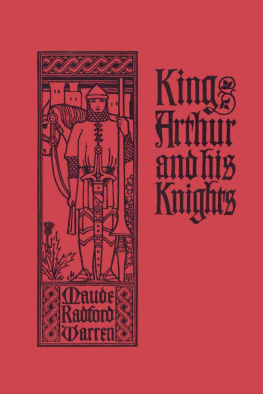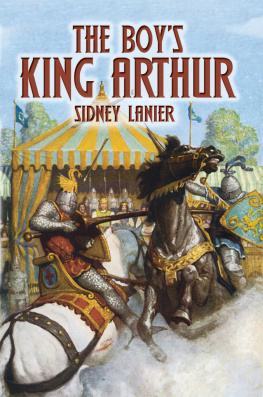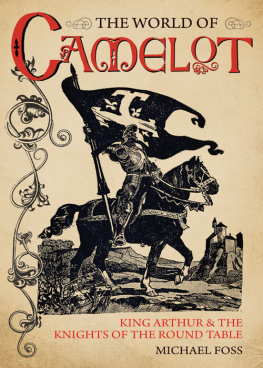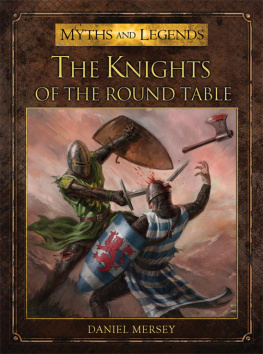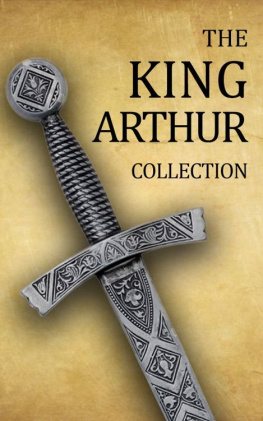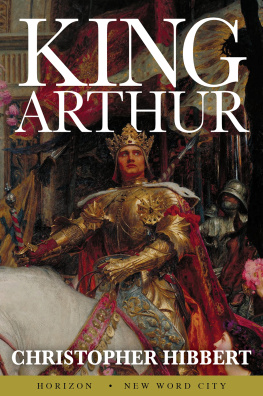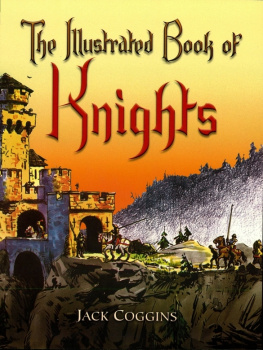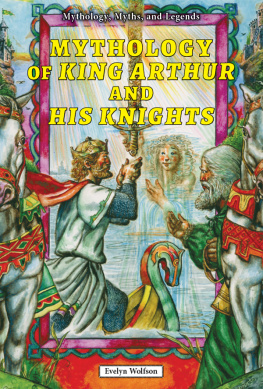Maude Radford Warren - King Arthur and His Knights
Here you can read online Maude Radford Warren - King Arthur and His Knights full text of the book (entire story) in english for free. Download pdf and epub, get meaning, cover and reviews about this ebook. year: 2006, publisher: Yesterdays Classics, genre: Adventure. Description of the work, (preface) as well as reviews are available. Best literature library LitArk.com created for fans of good reading and offers a wide selection of genres:
Romance novel
Science fiction
Adventure
Detective
Science
History
Home and family
Prose
Art
Politics
Computer
Non-fiction
Religion
Business
Children
Humor
Choose a favorite category and find really read worthwhile books. Enjoy immersion in the world of imagination, feel the emotions of the characters or learn something new for yourself, make an fascinating discovery.
- Book:King Arthur and His Knights
- Author:
- Publisher:Yesterdays Classics
- Genre:
- Year:2006
- Rating:4 / 5
- Favourites:Add to favourites
- Your mark:
- 80
- 1
- 2
- 3
- 4
- 5
King Arthur and His Knights: summary, description and annotation
We offer to read an annotation, description, summary or preface (depends on what the author of the book "King Arthur and His Knights" wrote himself). If you haven't found the necessary information about the book — write in the comments, we will try to find it.
King Arthur and His Knights — read online for free the complete book (whole text) full work
Below is the text of the book, divided by pages. System saving the place of the last page read, allows you to conveniently read the book "King Arthur and His Knights" online for free, without having to search again every time where you left off. Put a bookmark, and you can go to the page where you finished reading at any time.
Font size:
Interval:
Bookmark:
All rights reserved. No part of this book may be reproduced or retransmitted in any form or by any means without the written permission of the publisher.
This edition, first published in 2010 by Yesterday's Classics, an imprint of Yesterday's Classics, LLC, is an unabridged republication of the work originally published by Rand McNally & Co. in 1905. This title is available in a print edition (ISBN 978-1-59915-194-6).
Yesterday's Classics republishes classic books for children from the golden age of children's literature, the era from 1880 to 1920. Many of our titles are offered in high-quality paperback editions, with text cast in modern easy-to-read type for today's readers. The illustrations from the original volumes are included except in those few cases where the quality of the original images is too low to make their reproduction feasible. Unless specified otherwise, color illustrations in the original volumes are rendered in black and white in our print editions.
This reading-book is designed primarily for pupils of the fifth and sixth grades, although it is believed that those of other grades can read it with profit. The stories have been collected from Sir Thomas Malory's Morte d' Arthur and Tennyson's Idyls of the King . The material taken from the former source has been chosen with the view of presenting strictly suitable reading, and has also at times been slightly altered for the purpose of giving greater unity and continuity to the stories. In the tales taken from the Idyls of the King it has been necessary to omit certain themes and motives, but the characters have been treated in such a way as to preserve, as far as possible, Tennyson's conception of them. It is scarcely necessary to state that the customs and manners described are not those of the sixth century, the time of the Anglo-Saxon invasion, but those of the chivalric age, the period when the stories of Arthur were collected. So far as there has been an attempt to retain the quaintness of style found in the old sources, it has been by means of simple constructions rather than by the use of much archaic diction. The aim of the book is to give children an interest in the literature dealing with the great Celtic legend of King Arthur, and to arouse their admiration for the sturdy national virtues of which the English race has always been proud.

O NCE upon a time, a thousand years before Columbus discovered America, and when Rome was still the greatest city in the world, there lived a brave and beautiful youth whose name was Arthur. His home was in England, near London; and he lived with the good knight Sir Hector, whom he always called father.
They dwelt in a great square castle of gray stone, with a round tower at each corner. It was built about a courtyard, and was surrounded by a moat, across which was a drawbridge that could be raised or lowered. When it was raised the castle was practically a little island and very hard for enemies to attack.
On one side of the moat was a large wood, and here Arthur spent a great deal of his time. He liked to lie under the trees and gaze up at the blue of the sky. All about him old oaks stood like giant guardians watching sturdily over the soil where they had grown for centuries. Arthur could look between the trunks and see rabbits and squirrels whisking about. Sometimes a herd of brown deer with shy dark eyes would pass, holding their graceful heads high in the air; sometimes a flock of pheasants with brilliant plumage rose from the bushes. Again there was no sound except the tapping of a bright-crested woodpecker, and no motion but the fluttering of leaves and the trembling of violets half buried in green moss.

ALL ABOUT HIM OLD OAKS STOOD LIKE GIANT GUARDIANS
At times, when it was dim and silent in the wood, Arthur would hear bursts of merry laughter, the tinkling of bells, and the jingling of spurs. Then he would know that knights and ladies were riding down the road which ran beside the trees. Soon the knights would appear on horses, brown, black, and white, with gaily ornamented saddles, and bridles from which hung silver bells. Often the saddles were made of ivory or ebony, set with rubies or emeralds. The knights wore helmets laced with slender gold chains, and coats of mail made of tiny links of steel, so fine and light that all together hardly weighed more than a coat of cloth. Usually the legs of the knights were sheathed in steel armor; and their spurs were steel, or even gold. The ladies sat on horses with long trappings of silk, purple, white, or scarlet, with ornamented saddles and swinging bells. The robes of the ladies were very beautiful, being made of velvet or silk trimmed with ermine. Arthur liked to watch them, flashing by; crimson, and gold, and blue, and rose-colored. Better still, he liked to see the pretty happy faces of the ladies, and hear their gay voices. In those troublous times, however, the roads were so insecure that such companies did not often pass.
Sometimes the knights and ladies came to visit Sir Hector. Then Arthur would hurry from the forest to the castle. Sir Hector would stand on the lowered drawbridge to greet his guests, and would lead them, with many expressions of pleasure, into the courtyard. Then he would take a huge hammer hanging from a post, and beat with it on a table which stood in a corner of the courtyard. Immediately from all parts of the castle the squires and servants would come running to take the horses of the knights and ladies. Sir Hector's wife and daughters would then appear, and with their own hands remove the armor of the knights. They would offer them golden basis of water, and towels for washing, and after that put velvet mantles upon their shoulders. Then the guests would be brought to the supper table.
But Arthur did not spend all his time dreaming in the woods or gazing at knights and ladies. For many hours of the day he practiced feats of arms in the courtyard. It was the custom in England to train boys of noble birth to be knights. As soon as they were old enough they were taught to ride. Later on, they lived much among the ladies and maidens, learning gentle manners. Under the care of the knights, they learned to hunt, to carry a lance properly, and to use the sword; and having gained this skill, they were made squires if they had shown themselves to be of good character.
The, day by day, the squires practiced at the quintain. This was an upright post, on the top of which turned a crosspiece, having on one end a broad board, and on the other a bag of sand. The object was to ride up at a full gallop, strike the board with a long lance, and get away without being hit by the sand bag.
Besides this, the squires had services to do for the knights, in order that they might learn to be useful in as many ways as possible, and to be always humble. For instance, they took care of the armor of the knights, carried letters and messages for them, accompanied them at joustings and tournaments, being ready with extra weapons or assistance; and in the castle they helped to serve the guests at table. After months of such service, they went through a beautiful ceremony and were made knights. In the country round about, Arthur, of all the squires, was the most famous for his skill in the use of the lance and the sword, for his keenness in the hunt, and for his courtesy to all people.
Font size:
Interval:
Bookmark:
Similar books «King Arthur and His Knights»
Look at similar books to King Arthur and His Knights. We have selected literature similar in name and meaning in the hope of providing readers with more options to find new, interesting, not yet read works.
Discussion, reviews of the book King Arthur and His Knights and just readers' own opinions. Leave your comments, write what you think about the work, its meaning or the main characters. Specify what exactly you liked and what you didn't like, and why you think so.

